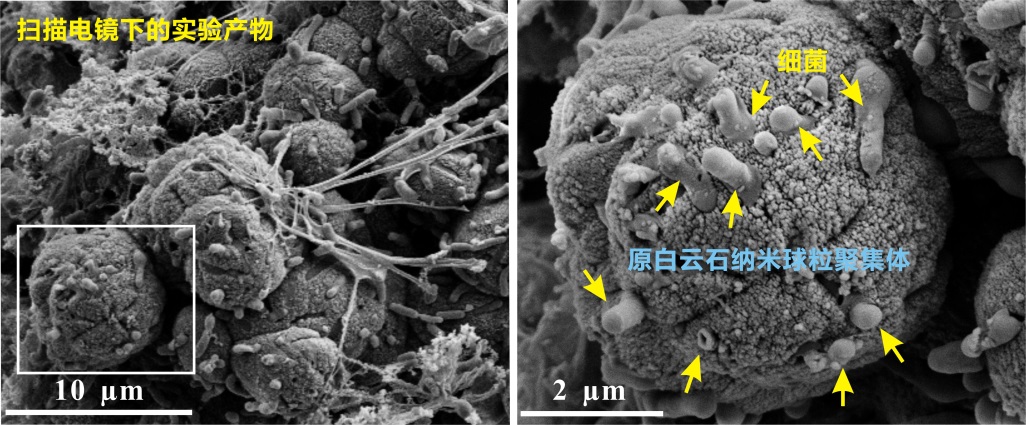搜索结果: 1-15 共查到“Inner Mongolia”相关记录48条 . 查询时间(0.046 秒)

中国地质大学科学技术发展院刘邓,王红梅 等. 环境学院 Geochimica et Cosmochimica Acta, 2019, The catalytic role of planktonic aerobic heterotrophic bacteria in protodolomite formation: Results from Lake Jibuhulangtu Nuur, Inner Mongolia, China(图)
白云石之谜;沉积岩
2021/10/20
近日,自然指数期刊Geochimica et Cosmochimica Acta刊发了中国地质大学环境学院王红梅教授和刘邓副教授团队在“白云石之谜”领域取得新进展——The catalytic role of planktonic aerobic heterotrophic bacteria in protodolomite formation: Results from Lake Jibuhul...
PRELIMINARY EVALUATION OF GAOFEN-3 POLARIMETRIC AND RADIOMETRIC ACCURACY BY CORNER REFLECTORS IN INNER MONGOLIA
Gaofen-3 Quality evaluation Polarimetric Radiometric accuracy
2018/5/15
On August 10, 2016, China launched its first C-band full polarimetric radar satellite, named Gaofen-3 (GF-3), for urban and agriculture monitoring, landslide detection, ocean applications, etc. Accord...
ANALYSIS ON TEMPORAL-SPATIAL CHANGES OF VEGETATION CVERRGE IN FARMING-PASTORAL ECOTONE OF INNER MONGOLIA
Chen Barag Banner Farming-pastoral ecotone Vegetation coverage Pixel decomposition model Temporal-spatial analysis
2018/5/16
Chen Barag Banner is located in the typical farming-pastoral ecotone of Inner Mongolia, and it is also the core area of Hulunbuir steppe. Typical agricultural and pastoral staggered production mode so...
FOREST COVER CHANGE ANALYSIS IN INNER MONGOLIA USING REMOTE SENSING DATA
Forest cover change Remote sensing data Inner Mongolia Land use and land cover data
2018/5/16
Forest is the lung of the earth, and it has important effect on maintaining the ecological balance of the whole earth. This study was conducted in Inner Mongolia during the year 1990–2015. Land use an...
Ecosystem Health Assessment in Inner Mongolia Region Based on Remote Sensing and GIS
Ecosystem GIS Indicators Analysis Land Cover
2015/11/23
Ecosystem health is an important index of the regional sustainable development. In view of the singularity of indicator selection caused by the limited application of remote sensing and GIS at present...
Rhizome Severing Increases Root Lifespan of Leymus chinensis in a Typical Steppe of Inner Mongolia
Rhizome Severing Increases Root Lifespan Leymus chinensis Typical Steppe of Inner Mongolia
2015/2/5
Background:Root lifespan is an important trait that determines plants’ ability to acquire and conserve soil resources. There have been several studies investigating characteristics of root lifespan of...
Spatial and temporal effects of nitrogen addition on root life span of Leymus chinensis in a typical steppe of Inner Mongolia
Leymus chinensis N addition root longevity root survival soil layers spatial and temporal effect
2015/2/5
To understand root dynamics of the native, perennial clonal grass Leymus chinensis in Inner Mongolia steppe, we examined spatial and temporal effects of N addition on root survivorship and longevity t...
N balance and c ycling of Inner Mongolia typical steppe: a comprehensive case study o f g razing effects
China climate variability grassland land use N dynamics N pathways semiarid sheep
2015/2/4
Increasing grazing pressure and climate change affect nitrogen (N) dynamics of grassland ecosystems in the Eurasian steppe belt with unclear consequences for future delivery of essential services such...
C4 abundance in an Inner Mongolia grassland system is driven by temperature–moisture interaction, not grazing pressure
C4 abundance Inner Mongolia grassland system temperature–moisture interaction not grazing pressure
2015/2/4
Global warming and CO2 rise is expected to change the balance of C3 and C4 plants in grassland vegetation, but disturbance,including grazing, could also affect C3/C4 community structure. We used a six...
Seasonally dependent impacts of grazing on soil nitrogen mineralization and linkages to ecosystem functioning in Inner Mongolia grassland
Typical steppe Grazing intensity Season Soil inorganic N pools Net N mineralization Soil temperature and moisture BiomassN content Nitrogen use efficiency
2015/2/4
Previous studies have suggested grazing may alter nitrogen (N) cycling of grasslands by accelerating or decelerating soil net N mineralization. The important mechanisms controlling these fluxes remain...
Differential responses of plant functional trait to grazing between two contrasting dominant C3 and C4 species in a typical steppe of Inner Mongolia, China
plant functional trait grazing between two dominant C3 and C4 species typical steppe of Inner Mongolia China
2015/2/4
Plant functional traits have been widely used to study the linkage between environmental drivers, trade-offs among different functions within a plant, and ecosystem structure and functioning. Here, th...
Complementarity in water sources among dominant species in typical steppe ecosystems of Inner Mongolia, China
Water source Hydrogen stable isotope Soil moisture Winter half-year precipitation Plant water potential Functional traits
2015/2/4
Water is the most important factor controlling plant growth, primary production, and ecosystem stability in arid and semi-arid grasslands. Here we conducted a 2-year field study to explore the contrib...
Plant responses following grazing removal at different stocking rates in an Inner Mongolia grassland ecosystem
Grazing removal Ecosystem stability. Compensatory effect Precipitation variation Grassland management Grassland restoration
2015/2/4
Grazing removal is widely used in grassland management. Plant responses following grazing removal at different organizational levels, however, are not well understood. We examined plant responses at d...
Can plant lit ter af fect net prima r y production of a typical stepp e in Inner Mongolia?
Growing degree-days Leymus chin ensis Litter addition Litter removal Soil moisture Stipa grandis
2015/2/4
Question: Litter (dead leaves or stems) affects production by conserving soil moisture. However, that role is not clear for grasslands where most precipitation falls during the growing season when the...
Effects of grazing on leaf traits and ecosystem functioning in Inner Mongolia grasslands: scaling from species to community
grazing on leaf traits ecosystem functioning Inner Mongolia grasslands scaling from species to community
2015/2/4
Understanding the mechanistic links between environmental drivers, human disturbance, plant functional traits, and ecosystem properties is a fundamental aspect of biodiversity-ecosystem functioning re...

